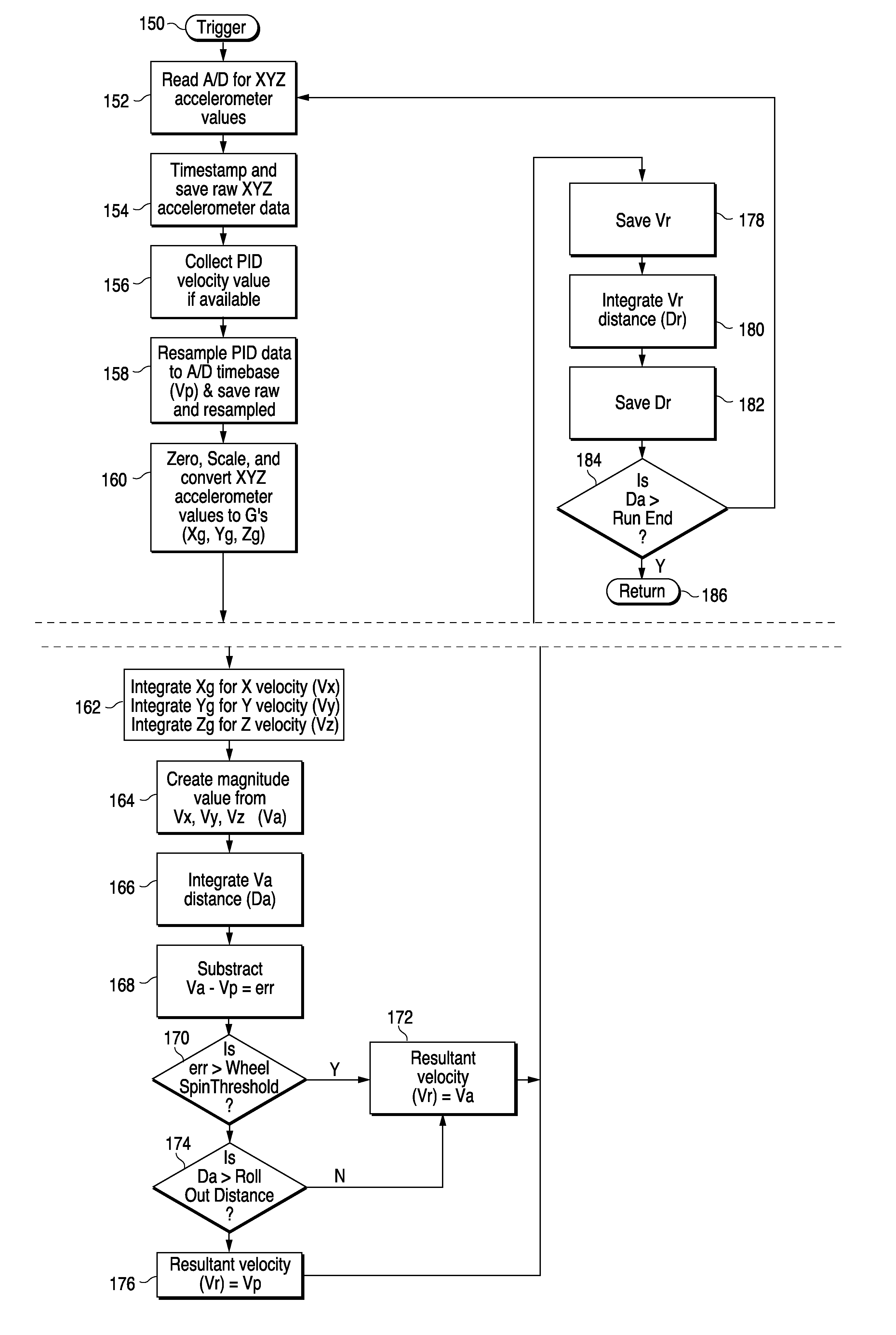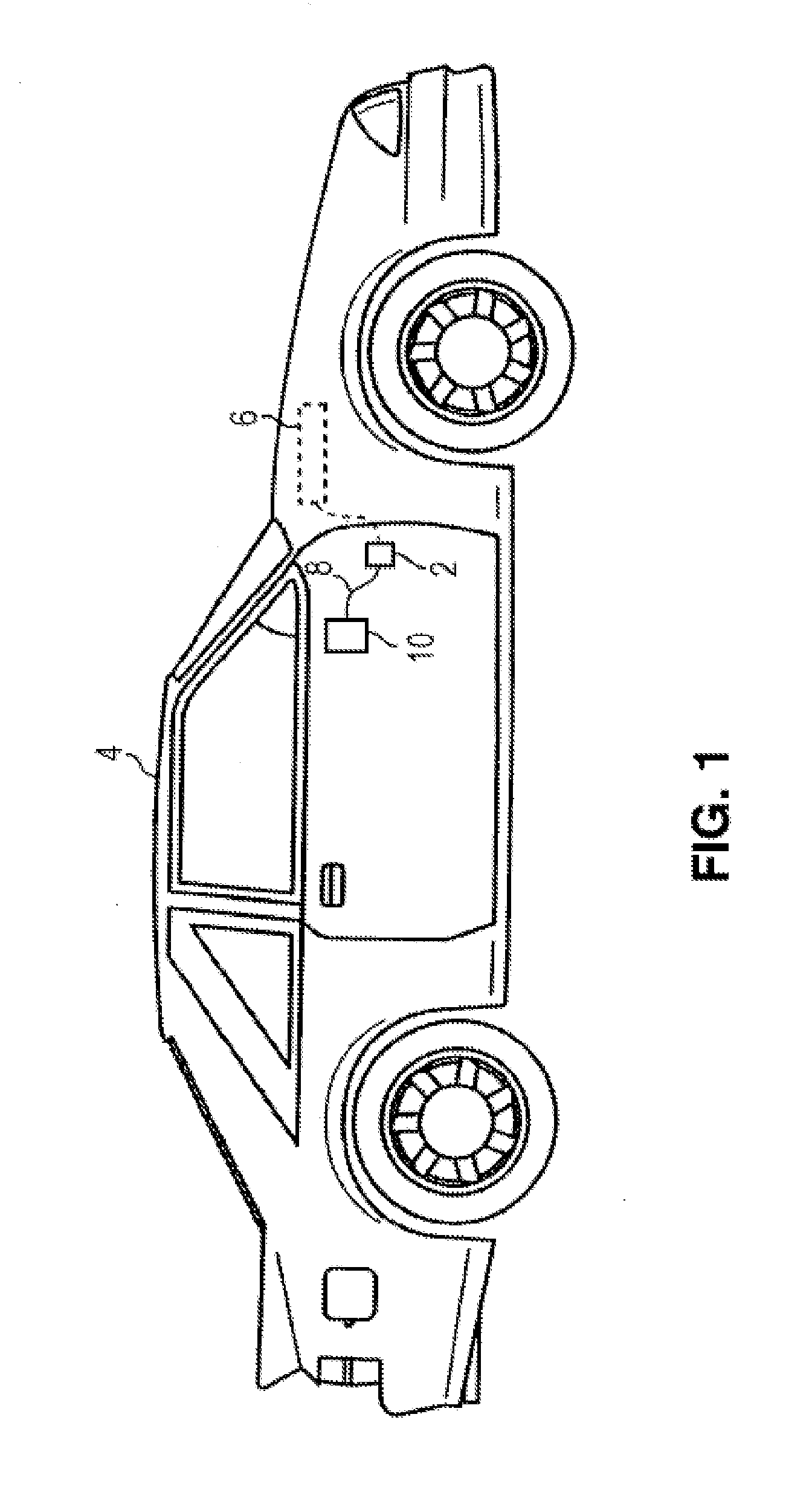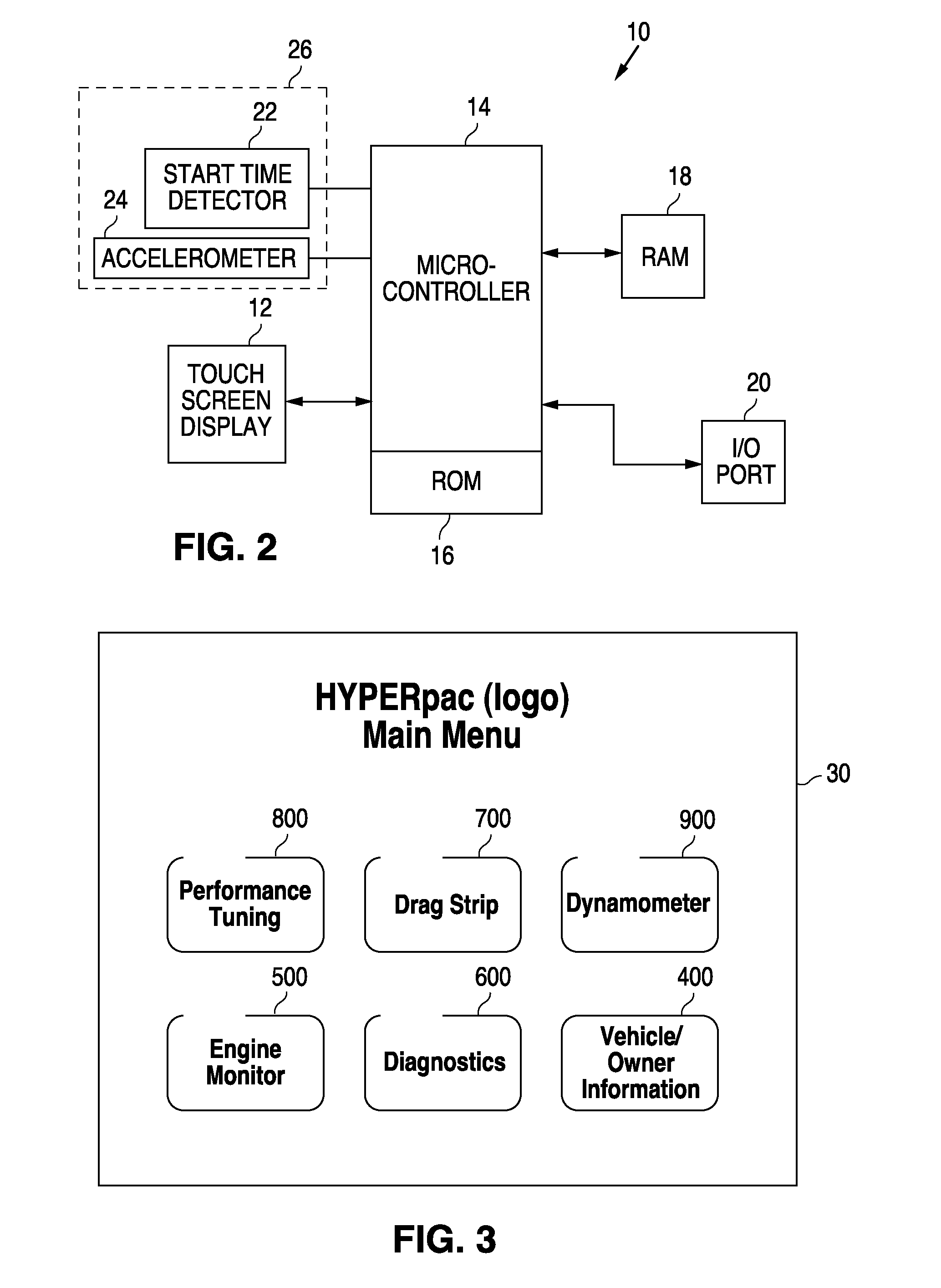Programmable automotive computer method and apparatus with accelerometer input
a computer method and input technology, applied in the field of vehicle computer devices and methods, can solve the problems of difficult installation, high cost of accessory gauges to display these operating conditions, and inability to accurately and reliably correct for velocity data errors, etc., to achieve accurate and reliable velocity data correction, easy data entry, and accurate detection of the start time
- Summary
- Abstract
- Description
- Claims
- Application Information
AI Technical Summary
Benefits of technology
Problems solved by technology
Method used
Image
Examples
Embodiment Construction
[0116]The device of the present invention is a portable programmable automotive computer. FIG. 1 is an illustration of an automobile 4 having an automotive computer 6, also referred to herein as a Powertrain Control Module or PCM, for controlling the operation thereof. Automotive computer 6 is coupled to an onboard diagnostic port 2, e.g., an OBD II port, accessible from the interior compartment of the automobile 4 as shown. Although automobile 4 is shown as a car, the present invention is also for use for other motor vehicles including trucks, sports utility vehicles (SUVs), hot rods, and the like. The diagnostic port 2 provides access to the PCM and provides engine characteristics and diagnostic codes information. A portable programmable automotive computer device 10 according to the present invention is coupled to diagnostic port 2. The programmable automotive computer device 10 is preferably coupled to the diagnostic port 2 via a cable 8 as shown in the embodiment in FIG. 1. It ...
PUM
 Login to View More
Login to View More Abstract
Description
Claims
Application Information
 Login to View More
Login to View More - R&D
- Intellectual Property
- Life Sciences
- Materials
- Tech Scout
- Unparalleled Data Quality
- Higher Quality Content
- 60% Fewer Hallucinations
Browse by: Latest US Patents, China's latest patents, Technical Efficacy Thesaurus, Application Domain, Technology Topic, Popular Technical Reports.
© 2025 PatSnap. All rights reserved.Legal|Privacy policy|Modern Slavery Act Transparency Statement|Sitemap|About US| Contact US: help@patsnap.com



